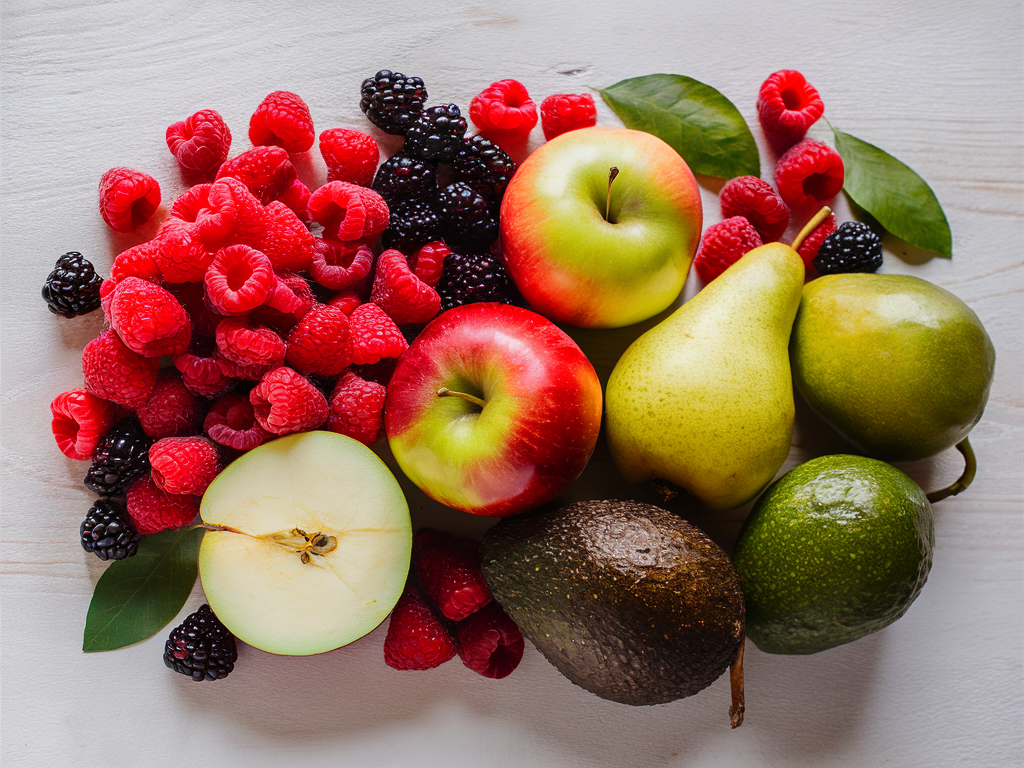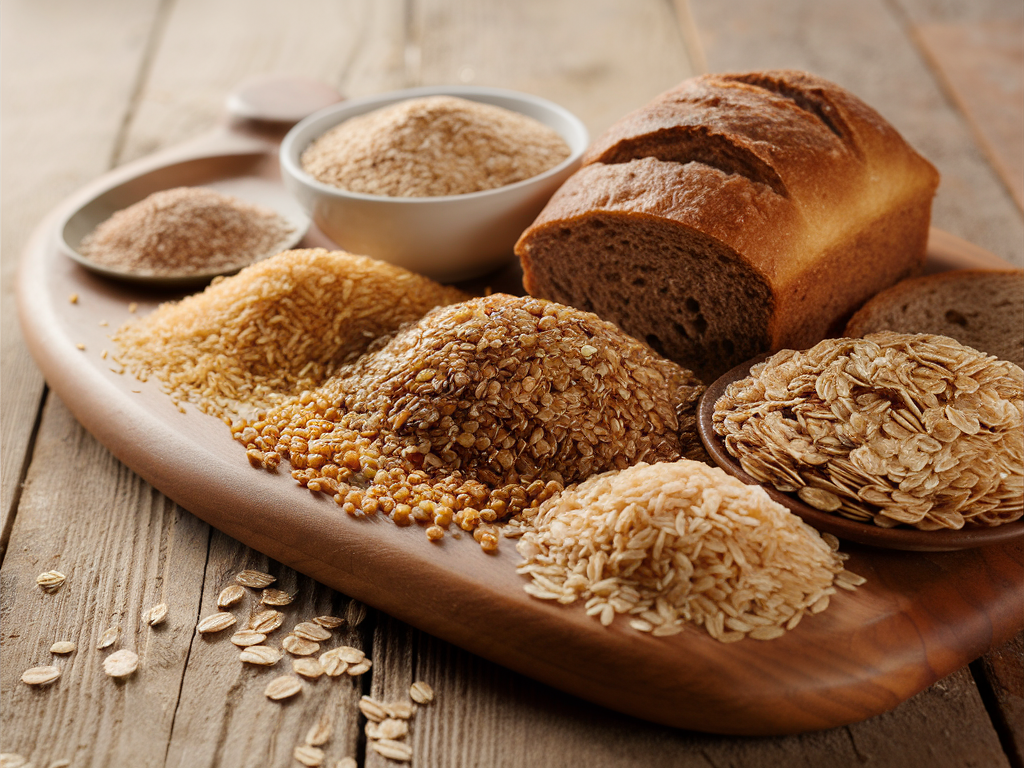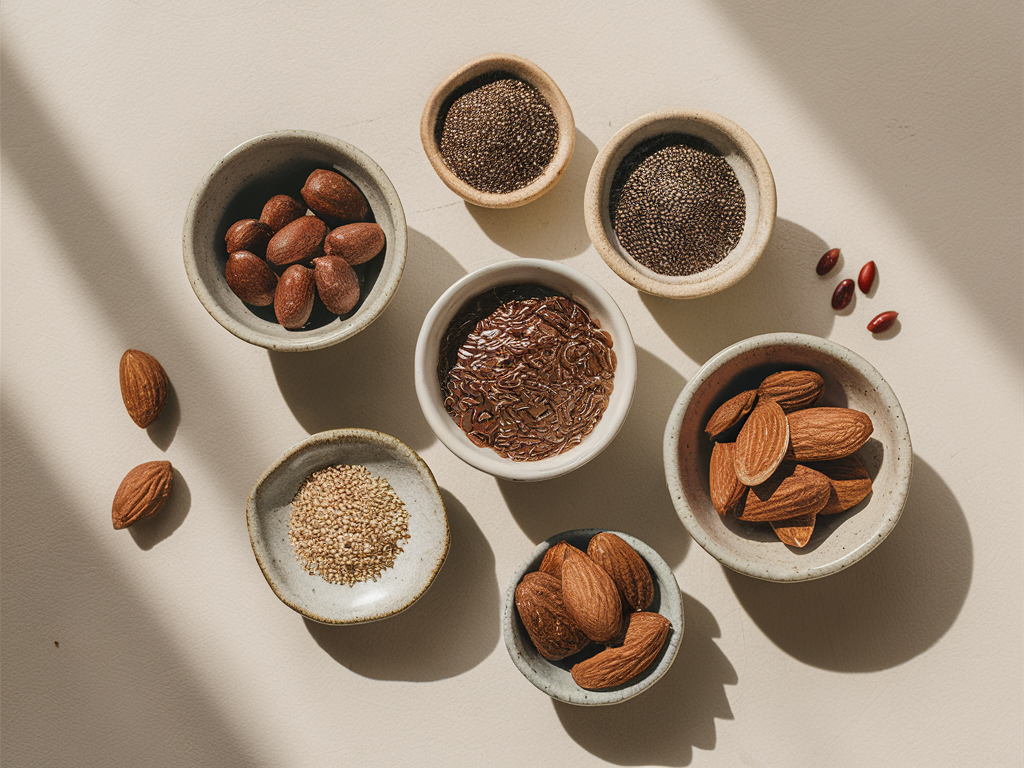Fiber is an essential nutrient that plays a critical role in maintaining optimal health. Despite its importance, most people only consume about half of the recommended daily intake. The American Heart Association suggests adults should get between 25 to 30 grams of dietary fiber per day, yet the average American only consumes around 15 grams. This nutritional gap can lead to various health issues, including digestive problems, weight gain, and increased risk of chronic diseases.
A high-fiber diet offers numerous health benefits: it promotes regular bowel movements, helps maintain bowel health, lowers cholesterol levels, controls blood sugar levels, and aids in achieving healthy weight. Dietary fiber – the indigestible part of plant foods – comes in two varieties: soluble fiber, which dissolves in water forming a gel-like substance, and insoluble fiber, which adds bulk to stool and helps food pass more quickly through the stomach and intestines.
Adding fiber-rich foods to your daily meals doesn’t have to be complicated. This comprehensive guide identifies the 25 best high-fiber foods that can easily be incorporated into your diet, helping you reach your daily fiber goals while enjoying delicious and nutritious options.
Fruits High in Fiber
1. Apples
Apples are one of the most convenient and portable high-fiber fruits available. A medium-sized apple with the skin contains about 4.4 grams of fiber, making it an excellent on-the-go snack. The pectin in apples, a type of soluble fiber, has been shown to have prebiotic effects that benefit gut health. For maximum fiber content, always eat apples with their skin on, as the peel contains much of the insoluble fiber.
2-4. Berries
Berries are not only delicious but also pack an impressive fiber punch:
Raspberries
With 8 grams of fiber per cup, raspberries rank among the highest fiber fruits available. They’re also rich in antioxidants and vitamin C, making them a nutritional powerhouse.
Blackberries
Similar to raspberries, blackberries contain approximately 7.6 grams of fiber per cup. Their deep color indicates high levels of anthocyanins, powerful antioxidants that support brain health.
Strawberries
While slightly lower in fiber than their berry cousins, strawberries still provide a respectable 3 grams per cup. They’re exceptionally high in vitamin C, containing more than oranges.
5. Pears
A medium pear with skin contains about 5.5 grams of fiber, making it one of the higher-fiber fruits. Pears contain both soluble and insoluble fiber, supporting heart and digestive health simultaneously.
6. Avocados
Often mistaken for a vegetable, this creamy fruit provides about 10 grams of fiber per cup. Avocados are unique for being high in both fiber and healthy monounsaturated fats, making them exceptionally satiating and nutritious.
7. Bananas
A medium banana contains around 3.1 grams of fiber. As bananas ripen, some of their starch converts to sugar, but they still maintain their fiber content. They’re particularly rich in resistant starch when slightly green, which functions similarly to soluble fiber.

Vegetables Rich in Fiber
8. Broccoli
This cruciferous vegetable provides about 5 grams of fiber per cup when cooked. Beyond its fiber content, broccoli is loaded with vitamins K and C, folate, and various antioxidants that support overall health and may help reduce inflammation.
9. Carrots
A cup of raw carrots provides 3.6 grams of fiber. Their sweet flavor and crunchy texture make them an ideal high-fiber snack option. The beta-carotene in carrots, which gives them their orange color, converts to vitamin A in the body, supporting eye health.
10. Brussels Sprouts
With 4 grams of fiber per cup when cooked, Brussels sprouts are a fiber-rich cruciferous vegetable. They also contain kaempferol, an antioxidant that may help reduce cancer growth, decrease inflammation, and improve heart health.
11. Artichokes
Artichokes are fiber champions among vegetables, with a medium artichoke providing almost 7 grams of fiber. They’re also rich in inulin, a type of prebiotic fiber that promotes gut health by feeding beneficial bacteria in your digestive system.
12. Sweet Potatoes
A medium baked sweet potato with skin contains approximately 4 grams of fiber. Sweet potatoes are also exceptionally high in vitamin A, providing over 400% of your daily needs in just one medium potato. The combination of fiber and complex carbohydrates makes sweet potatoes a satisfying and nutritious choice.
Whole Grains as Fiber Sources
13. Oats
One cup of cooked oatmeal provides about 4 grams of fiber, primarily in the form of beta-glucan, a soluble fiber known for its cholesterol-lowering properties. Studies have shown that regular consumption of oats can reduce both total and LDL cholesterol levels, decreasing the risk of heart disease.
14. Quinoa
A cup of cooked quinoa contains approximately 5 grams of fiber. As a complete protein containing all nine essential amino acids, quinoa is especially valuable for vegetarians and vegans. Its fiber content, combined with its protein and mineral profile, makes quinoa a nutritionally dense grain alternative.
15. Brown Rice
One cup of cooked brown rice provides about 3.5 grams of fiber. Unlike white rice, brown rice retains its bran and germ layers, which contain not only fiber but also important vitamins, minerals, and antioxidants that support overall health and digestion.
16. Barley
With approximately 6 grams of fiber per cooked cup, barley is one of the higher-fiber whole grains. It contains beta-glucans, which help regulate blood sugar by slowing the absorption of glucose into the bloodstream. Its chewy texture makes it perfect for soups, stews, and grain bowls.
17. Whole Wheat Bread/Pasta
Two slices of whole wheat bread provide about 4 grams of fiber, while a cup of whole wheat pasta offers around 6 grams. When selecting whole wheat products, check the ingredient list to ensure “whole wheat flour” is listed first, indicating that the product contains the entire grain kernel.

Legumes and Beans
18. Lentils
A fiber powerhouse, one cup of cooked lentils provides approximately 15.6 grams of fiber. Lentils are also an excellent source of plant-based protein, with about 18 grams per cup. Their combination of fiber, protein, and slow-digesting carbohydrates makes them exceptionally filling and nutritious.
19. Chickpeas
Also known as garbanzo beans, chickpeas contain about 12.5 grams of fiber per cooked cup. They’re versatile enough to be used in everything from hummus to roasted snacks, salads, and curries. Chickpeas also provide significant amounts of protein and micronutrients like folate and manganese.
20. Black Beans
One cup of cooked black beans offers around 15 grams of fiber. Their dark color indicates a high concentration of anthocyanins, antioxidants that may help reduce inflammation. Black beans make excellent additions to soups, burritos, salads, and Mexican-inspired dishes.
21. Split Peas
With an impressive 16.3 grams of fiber per cooked cup, split peas rank among the highest fiber legumes. They cook relatively quickly compared to other dried legumes and work wonderfully in soups, stews, and Indian dals.
22. Kidney Beans
A cup of cooked kidney beans provides approximately 13.1 grams of fiber. These versatile beans are excellent in chili, mixed bean salads, and many Creole dishes. They’re also rich in iron, phosphorus, and potassium.
Nuts and Seeds
23. Chia Seeds
These tiny seeds pack an incredible nutritional punch with about 10 grams of fiber in just two tablespoons. When mixed with liquid, chia seeds form a gel-like substance due to their soluble fiber content, making them perfect for puddings, smoothies, and as egg substitutes in vegan baking.
24. Flaxseeds
Two tablespoons of ground flaxseeds contain approximately 4 grams of fiber. To fully benefit from flaxseeds, they should be ground, as the whole seeds may pass through your digestive system undigested. They’re also one of the richest plant sources of omega-3 fatty acids.
25. Almonds
A quarter-cup serving of almonds (about 23 nuts) provides around 3.5 grams of fiber. Almonds are also rich in vitamin E, magnesium, and healthy monounsaturated fats. Regular consumption has been linked to reduced LDL cholesterol levels and improved heart health.

How to Incorporate More Fiber into Your Diet
Simple Swaps for Everyday Meals
Making small changes can significantly boost your fiber intake:
- Replace white rice with brown rice or quinoa
- Choose whole grain bread instead of white bread
- Swap fruit juice for whole fruits
- Add a handful of nuts or seeds to your breakfast cereal, yogurt, or salads
- Include beans or lentils in soups, salads, and main dishes
- Leave the skin on fruits and vegetables when appropriate
- Opt for whole grain pasta over regular pasta
Quick and Easy High-Fiber Recipes
Try these simple meal ideas to increase your fiber intake:
- Overnight Chia Pudding: Mix 2 tablespoons of chia seeds with 1/2 cup of milk (dairy or plant-based), add a touch of honey or maple syrup, and refrigerate overnight. Top with berries for extra fiber.
- Lentil Soup: Simmer lentils with diced carrots, celery, onions, and your favorite herbs and spices for a filling, fiber-rich meal.
- Smoothie Bowl: Blend frozen berries, a banana, spinach, and almond milk, then top with granola, chia seeds, and sliced fruit.
- Bean and Vegetable Wrap: Spread hummus on a whole grain tortilla, then add black beans, avocado slices, shredded carrots, and leafy greens.
- Quinoa Salad: Mix cooked quinoa with chopped vegetables, chickpeas, dried cranberries, and a simple olive oil and lemon juice dressing.
Tips for Gradually Increasing Fiber Intake
Increasing fiber too quickly can cause digestive discomfort, including gas and bloating. Follow these tips for a smoother transition:
- Add fiber to your diet gradually over several weeks
- Drink plenty of water as you increase fiber intake, as fiber works best when it can absorb water
- Pay attention to your body’s response and adjust accordingly
- Consider taking a probiotic supplement temporarily to help your gut microbiome adjust
- If you have digestive conditions like IBS, consult with a healthcare provider before significantly increasing fiber
Conclusion
Dietary fiber is a crucial component of a healthy diet that many of us don’t consume enough of. By incorporating a variety of the 25 fiber-rich foods discussed in this article, you can improve your digestive health, support heart health, manage weight more effectively, and reduce the risk of various chronic diseases.
Remember that diversity is key when it comes to fiber intake. Different types of fiber offer different benefits, so aim to include various sources from fruits, vegetables, whole grains, legumes, nuts, and seeds. This approach not only ensures you get both soluble and insoluble fiber but also provides a wide range of vitamins, minerals, and other beneficial compounds.
Start with small changes to your diet, gradually increasing your fiber intake while ensuring adequate hydration. Over time, these dietary adjustments will become habits, leading to lasting improvements in your health and wellbeing. Your digestive system – and your entire body – will thank you for making fiber a priority in your daily nutrition.

